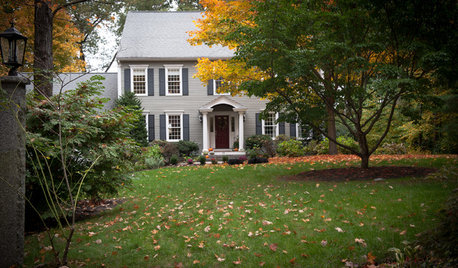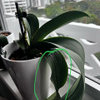Further Boston-fern questions
joel_bc
13 years ago
Related Stories

LIGHTING5 Questions to Ask for the Best Room Lighting
Get your overhead, task and accent lighting right for decorative beauty, less eyestrain and a focus exactly where you want
Full Story
BEFORE AND AFTERSA Boston Kitchen and Bath Go From Dreary to Darling
See how a $25,000 renovation budget gave 2 outdated spaces in a small Massachusetts apartment a brand-new look
Full Story
FLOORSIs Radiant Heating or Cooling Right for You?
Questions to ask before you go for one of these temperature systems in your floors or walls (yes, walls)
Full Story
FLOORSWhat to Ask When Considering Heated Floors
These questions can help you decide if radiant floor heating is right for you — and what your options are
Full Story
ARCHITECTUREModern or Contemporary: What's the Difference?
10 homes illustrate the essence of modern and contemporary home design styles
Full Story
REMODELING GUIDESWisdom to Help Your Relationship Survive a Remodel
Spend less time patching up partnerships and more time spackling and sanding with this insight from a Houzz remodeling survey
Full Story
HOUZZ TOURSMy Houzz: Easygoing Elegance for a Massachusetts Saltbox
With beers on tap, a pizza oven and a guitar collection, this home mixes classic with generous doses of fun
Full Story
HOUSEPLANTSOne Pot, One Big Shot of the Tropics
Give your rooms exotic flair in a single stroke. Tall Kentia palm fits the tropical bill beautifully
Full Story
HOUSEKEEPINGDon't Touch Another Stain Before You Read This
Even an innocent swipe with water may cause permanent damage. Here's what to know about how rugs and fabrics react
Full Story
HISTORIC HOMES19th-Century Gem: The Glessner House Bucks Tradition
Shunning Victorian frills, this 17,000-square foot home celebrates stone, wood and idiosyncrasy
Full StoryMore Discussions










birdsnblooms
joel_bcOriginal Author
Related Professionals
Maple Valley Landscape Architects & Landscape Designers · West Milford Landscape Architects & Landscape Designers · Ballwin Landscape Architects & Landscape Designers · Washington Landscape Architects & Landscape Designers · Mount Wilson Landscape Architects & Landscape Designers · Eagle Landscape Contractors · Ellicott City Landscape Contractors · Gaithersburg Landscape Contractors · Golden Landscape Contractors · Hicksville Landscape Contractors · New Berlin Landscape Contractors · San Carlos Park Landscape Contractors · Arkansas Interior Designers & Decorators · Charleston Interior Designers & Decorators · Wanaque Interior Designers & Decoratorsbirdsnblooms
rhizo_1 (North AL) zone 7
jane__ny
joel_bcOriginal Author
jane__ny
joel_bcOriginal Author
jane__ny
pirate_girl
joel_bcOriginal Author
birdsnblooms
jaxondel